- Home
- Peter F. Hamilton
Reality Dysfunction — Emergence nd-1
Reality Dysfunction — Emergence nd-1 Read online
Reality Dysfunction — Emergence
( Nights Dawn - 1 )
Peter F. Hamilton
A nightmare with no end .... In AD2600 the human race is finally beginning to realise its full potential. Hundreds of colonised planets scattered across the galaxy host a multitude of prosperous and wildly diverse cultures. Genetic engineering has pushed evolution far beyond nature's boundaries, defeating disease and producing extraordinary spaceborn creatures. Huge fleets of sentient trader starships thrive on the wealth created by the industrialisation of entire star systems. And thoughout inhabited space the Confederation Navy keeps the peace. A true golden age is within our grasp. But now something has gone catastrophically wrong. On a primitive coloney planet a renegade criminal's chance encounter with an utterly alien entity unleashes the most primal of all our fears. An extinct race which inhabited the galaxy aeons ago called it 'The Reality Dysfunction'. It is the nightmare which has prowled beside us since the beginning of history. This is space opera on an epic scale, with dozens of characters, hundreds of planets, universe-spanning plots, and settings that range from wooden huts and muddy villages to sentient starships and newborn suns. It's also the first part of a two-volume book that is itself the first book of a series. There's no question that there's a lot going on here (too much to even begin to detail the plot), but Hamilton handles it all with an ease reminiscent of E. E. ''Doc'' Smith. The best way to describe it: it's big, it's good, and luckily there's plenty more on the way.
Reality Dysfunction: Emergence
Chapter 01
Space outside the attack cruiser Beezling tore open in five places. For a moment anyone looking into the expanding rents would have received a true glimpse into empty infinity. The pseudofabric structure of the wormholes was a photonic dead zone, a darkness so profound it seemed to be spilling out to contaminate the real universe. Then ships were suddenly streaking up out of the gaping termini, accelerating away at six gees, twisting round on interception trajectories. They were different from the spherical Garissan naval craft which they had tracked between the stars, graceful, streamlined teardrop shapes. Larger and dangerously powerful. Alive.
Nestled snugly in the armoured and sealed command capsule at the heart of the Beezling , Captain Kyle Prager was shocked out of a simple astrogration review by a datavised proximity alert from the flight computer. His neural nanonics relayed information from the ship’s external sensor clusters directly into his brain. Out here in the great emptiness of interstellar space starlight wasn’t powerful enough to provide an optical-band return. He was relying on the infrared signature alone, arching smears of pinkness which the discrimination programs struggled to resolve. Radar pulses were fuzzed and hashed by the ships’ electronic-warfare pods.
The combat programs stored in the memory clusters of his neural nanonics went into primary mode. He datavised a quick sequence of instructions into the flight computer, desperate for more information. Trajectories from the five newcomers were computed, appearing as scarlet vector lines curving through space to line up ominously on the Beezling and her two escort frigates. They were still accelerating, yet there was no reaction-drive exhaust plume. Kyle Prager’s heart sank. “Voidhawks,” he said. On the couch next to him, Tane Ogilie, the Beezling ’s patterning-node officer, groaned in dismay. “How did they know?”
“Confederation Navy Intelligence is good,” Kyle Prager retorted. “They knew we’d try a direct retaliation. They must have monitored our naval traffic and followed us.” In his mind a black pressure was building. He could almost sense the antimatter-confinement chambers inside the Beezling , twinkling like devilish red stars all around him.
Antimatter was the one anathema which was universal throughout the Confederation. No matter what planet or asteroid settlement you were brought up on, they all condemned it.
The penalty if a Confederation Navy ship caught them was an immediate death sentence for the captain, and a one-way ticket on a drop capsule to a penal planet for everyone else on board.
There was no choice, of course, the Beezling needed the fantastic delta-V reserve which only antimatter provided, far superior to the usual fusion drives of Adamist starships. The Omutan Defence Force ships would be equipped with antimatter drives. They have it because we have it; we have it because they have it. One of the oldest, and feeblest, arguments history had produced.
Kyle Prager’s shoulder muscles relaxed, an involuntary submission. He’d known and accepted the risk, or at least told himself and the admirals he did.
It would be quick and painless, and under ordinary circumstances the crew would survive. But he had orders from the Garissan Admiralty. Nobody was to be allowed access to the Alchemist which the Beezling was carrying; and certainly not the Edenists crewing the voidhawks: their bitek science was powerful enough already.
“A distortion field has locked onto us,” Tane Ogilie reported. His voice was strained, high. “We can’t jump clear.”
For a brief moment Kyle Prager wondered what it would be like to command a voidhawk, the effortless power and total superiority. It was almost a feeling of envy.
Three of the intercepting ships were curving round to chase the Beezling , while the frigates, Chengho and Gombari , only rated one pursuer each.
Mother Mary, with that formation they must know what we’re carrying.
He formed the scuttle code in his mind, reviewing the procedure before datavising it into the flight computer. It was simple enough, shutting down the safeguards in the main drive’s antimatter-confinement chambers, engulfing nearby space with a nova-blast of light and hard radiation.
I could wait until the voidhawks rendezvoused, take them with us. But the crews are only doing their job.
The flimsy infrared image of the three pursuit craft suddenly increased dramatically, brightening, expanding. Eight wavering petals of energy opened outwards from each of them, the sharp, glaring tips moving swiftly away from the centre. Analysis programs cut in; flight vector projections materialized, linking all twenty-four projectiles to the Beezling with looped laserlike threads of light. The exhaust plumes were hugely radioactive. Acceleration was hitting forty gees. Antimatter propulsion.
“Combat wasp launch,” Tane Ogilie shouted hoarsely.
“They’re not voidhawks,” Kyle Prager said with grim fury. “They’re fucking blackhawks. Omuta’s hired blackhawks!” He datavised an evasion manoeuvre order into the flight computer, frantically activating the Beezling ’s defence procedures. He’d been almost criminally negligent in not identifying the hostiles as soon as they emerged. He checked his neural nanonics; elapsed time since their emergence was seven seconds. Was that really all? Even so, his response had been woefully sloppy in an arena where milliseconds was the most precious currency. They would pay for that, maybe with their lives.
An acceleration warning blared through the Beezling —audio, optical, and datavise. His crew would be strapped in, but Mother Mary alone knew what the civilians they carried were doing.
The ship’s acceleration built smoothly, and he felt the nanonic membrane supplements in his body hardening, supporting his internal organs against the gee force, preventing them from being pushed through his spine, ensuring an undiminished blood supply to his brain, forestalling blackout. Beezling shuddered violently as its own volley of combat wasps launched. Acceleration reached eight gees, and carried on building.
In the Beezling ’s forward crew module, Dr Alkad Mzu had been reviewing the ship’s status as it flew towards their next jump coordinate at one and a half gees. Neural nanonics processed the raw data to provide a composite of the starship’s external sensor images, along with flig
ht vector projections. The picture unfurled behind her retinas, scintillating ghost shadows until she closed her eyelids. Chengho and Gombari showed as intense streaks of blue-white light, the glare from their drive exhausts overwhelming the background starfield.
It was a tight formation. Chengho was two thousand kilometres away, Gombari just over three thousand. Alkad knew it took superb astrogation for ships to emerge within five thousand kilometres of each other after a jump of ten light-years. Garissa had spent a lot of money on equipping its navy with the best hardware available.
Money which could have been better spent at the university, or on supporting the national medical service. Garissa wasn’t a particularly rich world. And as to where the Department of Defence had acquired such large amounts of antimatter, Alkad had studiously avoided asking.
“It will be about thirty minutes before the next jump,” Peter Adul said.
Alkad cancelled the datavise. The sensor visualization of the ships faded from her perception, replaced by the spartan grey-green composite of the cabin walls. Peter was standing in the open oval hatch, wearing a dark turquoise ship-suit, padded on all the joints to protect him from bruising knocks in free fall. He smiled invitingly at her. She could see the worry behind the bright, lively eyes.
Peter was thirty-five, a metre eighty tall, with skin actually darker than her own deep ebony. He worked in the university mathematics department, and they had been engaged for eighteen months. Never the outgoing boisterous type, but quietly supportive. One person who genuinely didn’t seem to mind the fact that she was brighter than him—and they were rare enough. Even the prospect of her being for ever damned as the Alchemist’s creator left him unperturbed. He had actually accompanied her to the ultra-secure navy asteroid base to help with the device’s mathematics.
“I thought we could spend them together,” he said.
She grinned back up at him and slipped out of the restraint net as he sat on the edge of her acceleration cushioning beside her. “Thanks. Navy types don’t mind being cooped up by themselves during realignment. But it certainly gets to me.” Various hums and buzzes from the ship’s environmental systems invaded the cabin, crew-members talking softly at their stations, vague words echoing along the cramped companionways. Beezling had been assembled specifically to deploy the Alchemist device, its design concentrating on durability and performance; crew comforts had come a long way down the navy’s priority list.
Alkad swung her legs over the side of the cushioning ledge, feet pulled down to the decking by the strong gravity, and leaned against him, thankful for the warmth of the contact, his just being there.
His arm went round her shoulders. “What is it about the prospect of incipient mortality which gets the hormones flowing?”
She smiled and pressed harder into his side. “What is it in the male make-up that simply being awake gets your hormones going?”
“That’s a no?”
“That’s a no,” she said firmly. “There’s no door, and we’d do ourselves an injury in this gravity. Besides, there will be plenty of time once we get back.”
“Yes.” If we do. But he didn’t say that out loud.
That was when the acceleration warning sounded. Even then it took them a second to react, breaking through the initial moment of shock.
“Get back on the cushioning,” Peter yelled as the gee force leapt upwards. Alkad attempted to swing her legs back up on the ledge. They were made of uranium, impossibly heavy. Muscles and tendons grated horribly as she strained against the weight.
Come on. It’s easy. It’s only your legs. Dear Mother, how many times have you lifted your legs? Come on!
Neural-nanonic nerve-impulse overrides bullied her thigh muscles. She got one leg back on the cushioning. By that time the acceleration had reached seven gees. She was stuck with her left leg on the floor, foot slipping along the decking as the enormous weight of her thigh pushed down, forcing her knee joint open.
The two opposing swarms of combat wasps engaged; attacking and defending drones splitting open, each releasing a barrage of submunitions. Space seethed with directed energy beams. Electronic warfare pulses popped and burned up and down the electromagnetic spectrum, trying to deflect, goad, confuse, harass. A second later it was the turn of the missiles. Solid kinetic bullets bloomed like antique shotgun blasts. All it took was the slightest graze, at those closing velocities both projectile and target alike detonated into billowing plumes of plasma. Fusion explosions followed, intense flares of blue-white starfire flinging off violet coronae. Antimatter added its vehemence to the fray, producing even larger explosions amid the ionic maelstrom.
The nebula which blazed between the Beezling and her attackers was roughly lenticular, and over three hundred kilometres broad, choked with dense cyclonic concentrations, spewing tremendous cataracts of fire from its edges. No sensor in existence could penetrate such chaos.
Beezling lurched round violently, drive deflector coils working at maximum pitch, taking advantage of the momentary blind spot to change course. A second volley of combat wasps shot out of their bays around the attack cruiser’s lower hull, just in time to meet a new salvo fired from the blackhawks.
Peter had barely managed to roll off the acceleration couch where he was sitting, landing hard on the floor of Alkad’s cabin, when the terrible acceleration began. He watched helplessly as Alkad’s left leg slowly gave way under the crushing gee force; her whimpering filling him with futile guilt. The composite deck was trying to ram its way up through his back. His neck was agony. Half of the stars he could see were pain spots, the rest were a datavised nonsense. The flight computer had reduced the external combat arena to neat ordered graphics which buffeted against priority metabolic warnings. He couldn’t even focus his thoughts on them. There were more important things to worry about, like how the hell was he going to force his chest up so he could breathe again?
Suddenly the gravity field shifted. He left the decking behind, and slammed into the cabin wall. His teeth were punched clean through his lip; he heard his nose break with an ugly crunch. Hot blood squirted into his mouth, frightening him. No wound could possibly heal in this environment. He would very probably bleed to death if this went on much longer.
Then gravity righted again, squeezing him back against the decking. He screamed in shock and pain. The datavised visualization from the flight computer had collapsed into an eerily calm moire pattern of red, green, and blue lines. Darkness was encroaching around the edges.
The second clash of combat wasps took place over a wider front. Sensors and processors on both sides were overloaded and confused by the vivid nebula and its wild energy efflux. New explosions were splattered against the background of destruction. Some of the attacking combat wasps pierced the defensive cordon. A third volley of defenders left the Beezling .
Six thousand kilometres away, another nuclear-fuelled nebula burst into existence as the Chengho fought off its solitary hunter’s swarm of combat wasps. The Gombari wasn’t so fortunate. Its antimatter-confinement chambers were shattered by the incoming weapons. Beezling ’s sensor filters engaged instantly as an ephemeral star ignited. Kyle Prager lost his datavised visualization across half of the universe. He never saw the blackhawk which attacked the frigate wrenching open a wormhole interstice and vanish within, fleeing the lethal sleet of radiation its attack had liberated.
The combat wasp closing on Beezling at forty-six gees analysed the formation of the robot defenders approaching it. Missiles and ECM pods raced away, fighting a fluid battle of evasion and deception for over a tenth of a second. Then the attacker was through, a single defender left between it and the starship, moving to intercept, but slowly, the defender had only just left its launch cradle, accelerating at barely twenty gees.
Situation displays flipped into Kyle Prager’s mind. The blackhawks’ positions, their trajectories. Combat wasp performance. Likely reserves. He reviewed them, mind augmented by the tactics program, and made his decision, committin
g half of his remaining combat wasps to offensive duties.
Beezling rang like a bell as they launched.
At a hundred and fifty kilometres from its prey, the incoming combat wasp’s guidance processors computed it wouldn’t quite reach the starship before it was intercepted. It ran through the available options, making its choice.
At a hundred and twenty kilometres away it loaded a deactivation sequence into the hardware of the seven antimatter-confine chambers it was carrying.
At ninety-five kilometres away the magnetic field of the first confinement chamber snapped off. Forty-six gravities took over. The frozen pellet of antimatter was smashed into the rear wall. Long before contact was actually made the magnetic field of the second confinement chamber was switched off. All seven shut down over a period of a hundred picoseconds, producing a specifically shaped blast wave.
At eighty-eight kilometres away, the antimatter pellets had annihilated an equal mass of matter, resulting in a titanic energy release. The spear of plasma which formed was a thousand times hotter than the core of a star, hurtling towards the Beezling at relativistic velocities.
Sensor clusters and thermo-dump panels vaporized immediately as the stream of disassociated ions slammed into the Beezling . Molecular-binding force generators laboured to maintain the silicon hull’s integrity, a struggle they were always destined to lose against such ferocity. Breakthrough occurred in a dozen different places at once. Plasma surged in, playing over the complex, delicate systems like a blowtorch over snow crystals.
The luckless Beezling suffered a further blow from fate. One of the plasma streams hit a deuterium tank, searing its way through the foam insulation and titanium shell. The cryogenic liquid reverted to its natural gaseous state under immense pressure, ripping the tank open, and blasting fragments in every direction. An eight-metre section of the hull buckled upwards, and a volcanic geyser of deuterium haemorrhaged out towards the stars past shredded fingers of silicon.

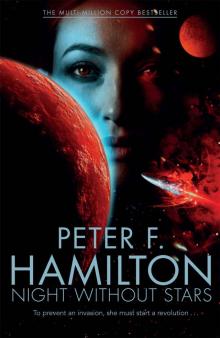 A Night Without Stars
A Night Without Stars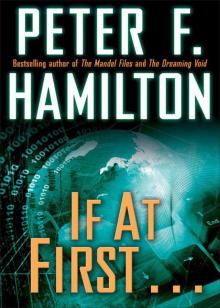 If at First . . .
If at First . . .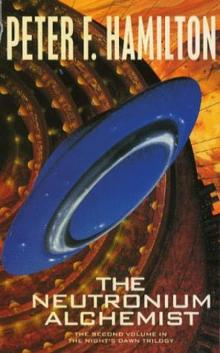 The Neutronium Alchemist
The Neutronium Alchemist Great North Road
Great North Road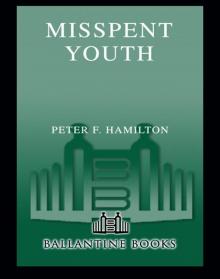 Misspent Youth
Misspent Youth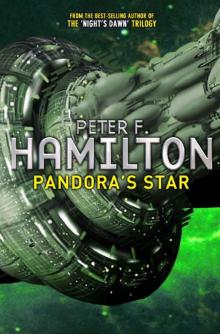 Pandora's Star
Pandora's Star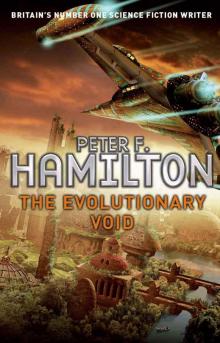 The Evolutionary Void
The Evolutionary Void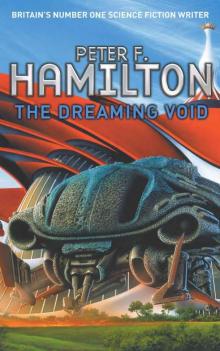 The Dreaming Void
The Dreaming Void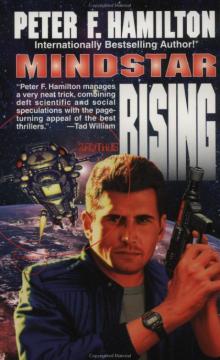 Mindstar Rising
Mindstar Rising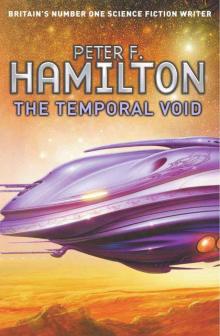 The Temporal Void
The Temporal Void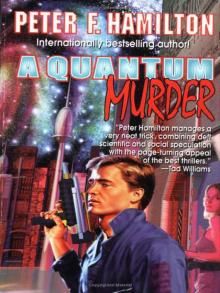 A Quantum Murder
A Quantum Murder The Hunting of the Princes
The Hunting of the Princes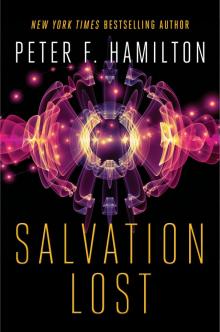 Salvation Lost
Salvation Lost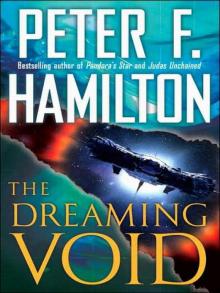 The Dreaming
The Dreaming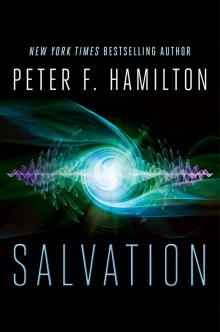 Salvation
Salvation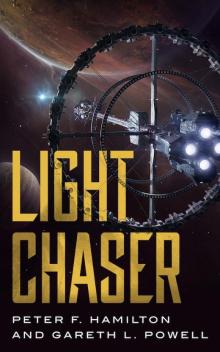 Light Chaser
Light Chaser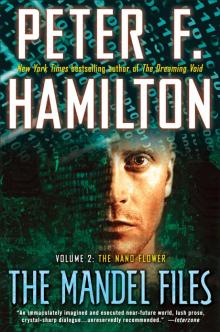 The Mandel Files, Volume 2: The Nano Flower
The Mandel Files, Volume 2: The Nano Flower![The Saints of Salvation [British Ed.] Read online](http://i1.bookreadfree.com/22/the_saints_of_salvation_british_ed__preview.jpg) The Saints of Salvation [British Ed.]
The Saints of Salvation [British Ed.]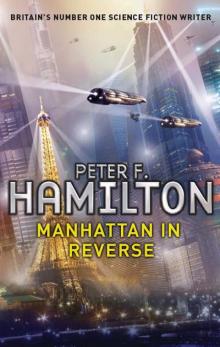 Manhattan in Reverse
Manhattan in Reverse The Secret Throne
The Secret Throne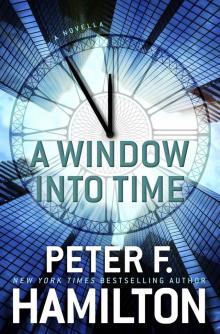 A Window Into Time
A Window Into Time A Second Chance at Eden
A Second Chance at Eden The Nano Flower
The Nano Flower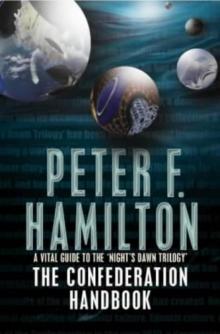 The Confederation Handbook
The Confederation Handbook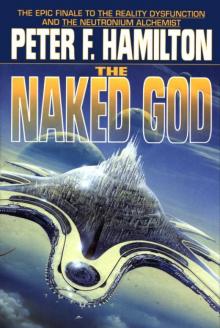 The Naked God
The Naked God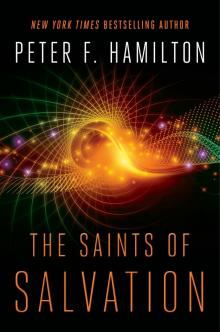 The Saints of Salvation
The Saints of Salvation The Void Trilogy 3-Book Bundle
The Void Trilogy 3-Book Bundle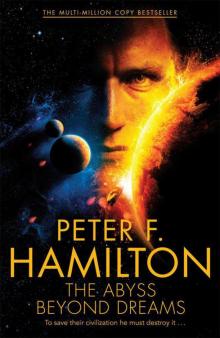 The Abyss Beyond Dreams
The Abyss Beyond Dreams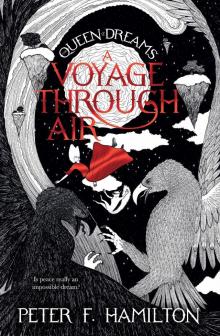 A Voyage Through Air
A Voyage Through Air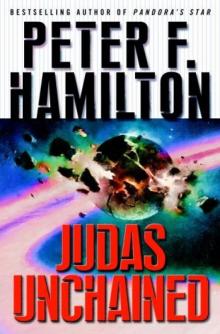 Judas Unchained
Judas Unchained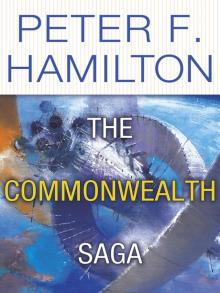 The Commonwealth Saga 2-Book Bundle
The Commonwealth Saga 2-Book Bundle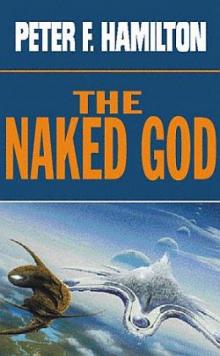 The Naked God - Flight nd-5
The Naked God - Flight nd-5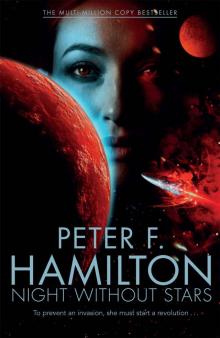 Night Without Stars (Chronicle of the Fallers Book 2)
Night Without Stars (Chronicle of the Fallers Book 2)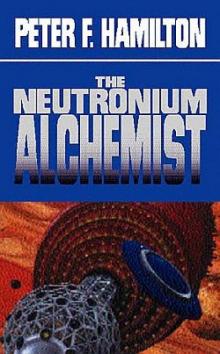 Neutronium Alchemist - Conflict nd-4
Neutronium Alchemist - Conflict nd-4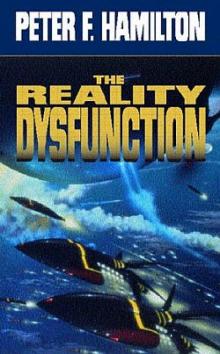 Reality Dysfunction - Expansion nd-2
Reality Dysfunction - Expansion nd-2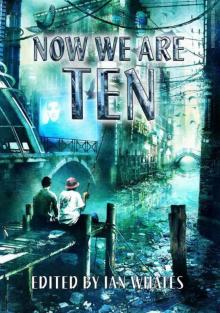 Now We Are Ten: Celebrating the First Ten Years of NewCon Press
Now We Are Ten: Celebrating the First Ten Years of NewCon Press Neutronium Alchemist - Consolidation nd-3
Neutronium Alchemist - Consolidation nd-3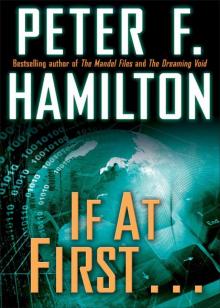 If at First . . . (Short Story)
If at First . . . (Short Story)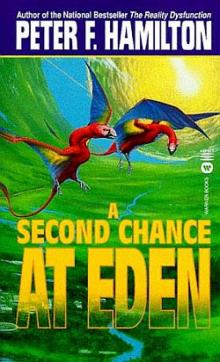 A Second Chance at Eden nd-7
A Second Chance at Eden nd-7 Judas Unchained cs-2
Judas Unchained cs-2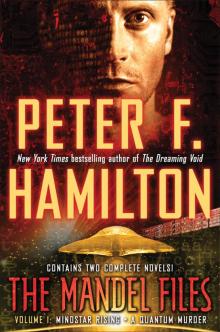 The Mandel Files, Volume 1
The Mandel Files, Volume 1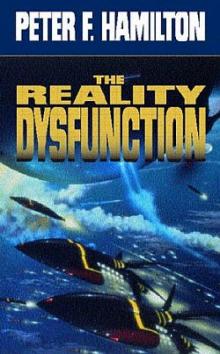 Reality Dysfunction — Emergence nd-1
Reality Dysfunction — Emergence nd-1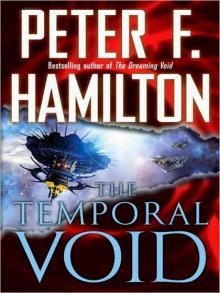 The Temporal Void (ARC)
The Temporal Void (ARC)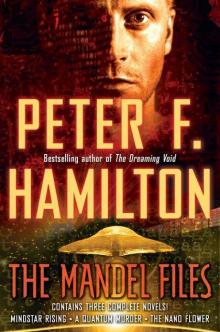 The Mandel Files
The Mandel Files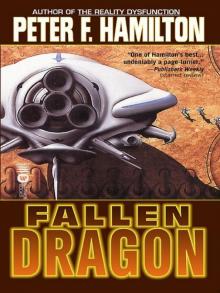 Fallen Fragon
Fallen Fragon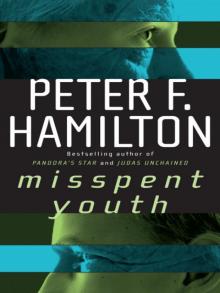 Misspent Youth (commonwealth saga)
Misspent Youth (commonwealth saga)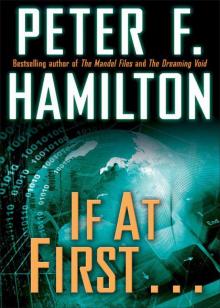 If at First...
If at First... Best of British Science Fiction 2016
Best of British Science Fiction 2016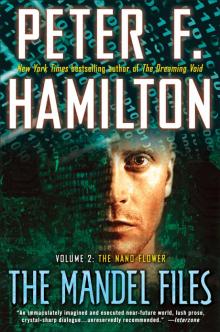 The Mandel Files, Volume 2
The Mandel Files, Volume 2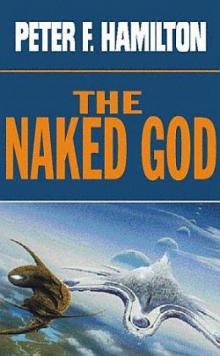 The Naked God - Faith nd-6
The Naked God - Faith nd-6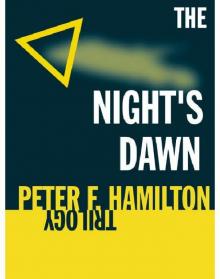 The Night's Dawn Trilogy
The Night's Dawn Trilogy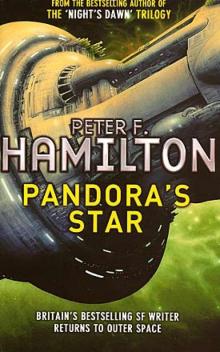 Pandora's Star cs-2
Pandora's Star cs-2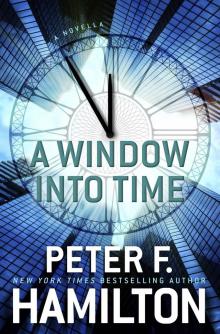 A Window into Time (Novella)
A Window into Time (Novella)